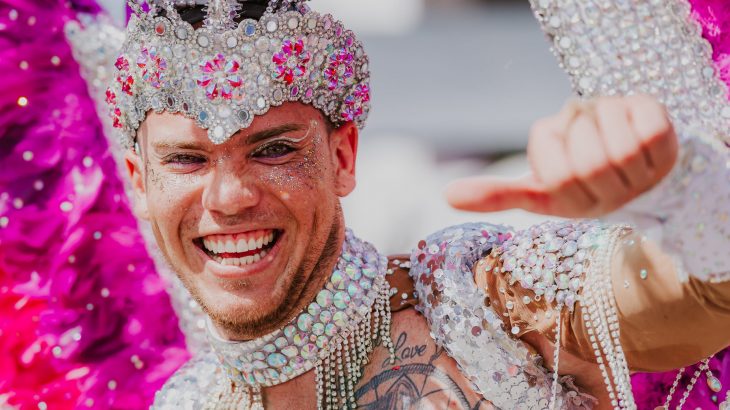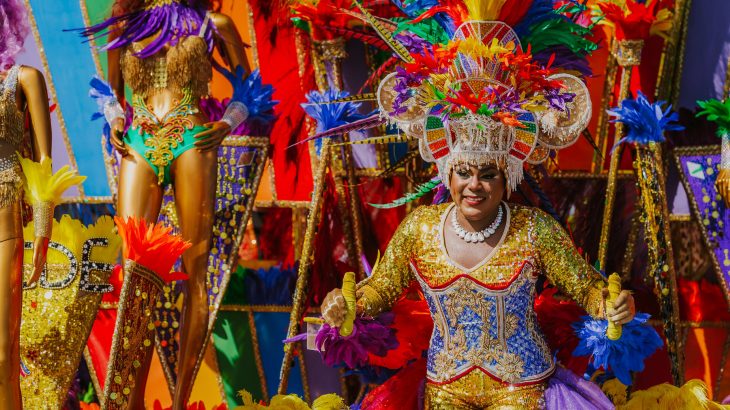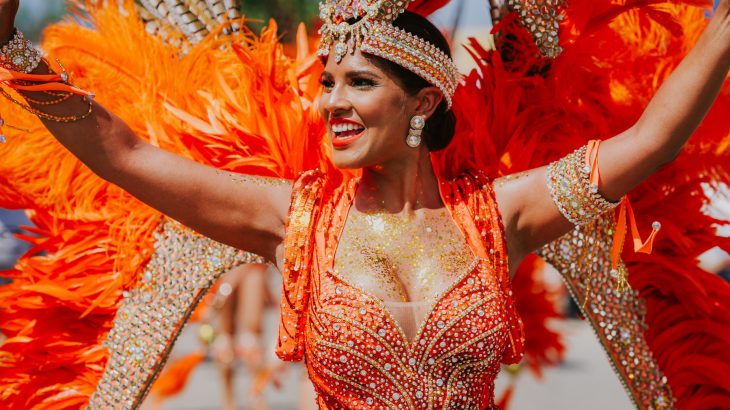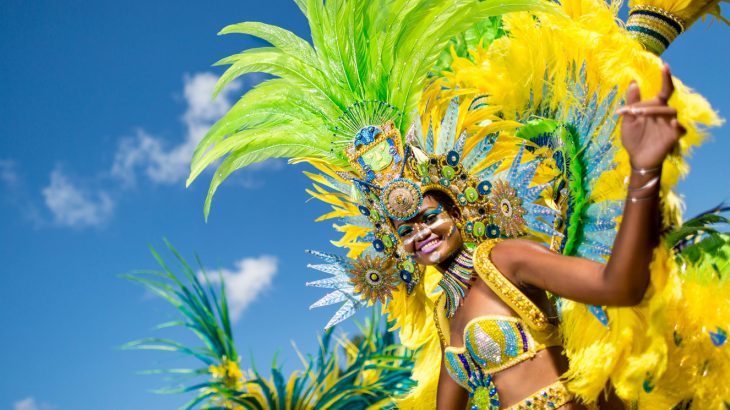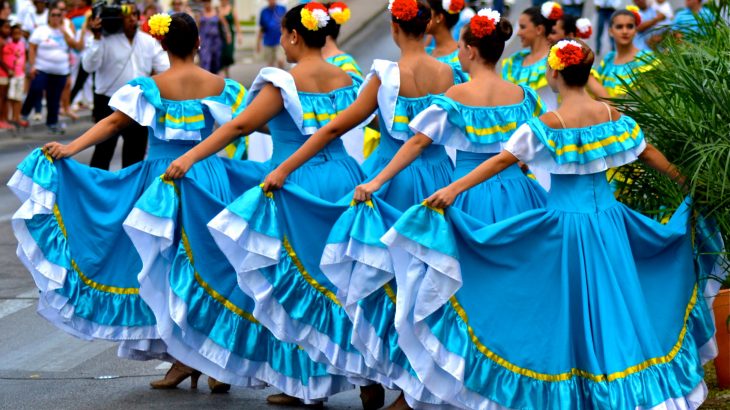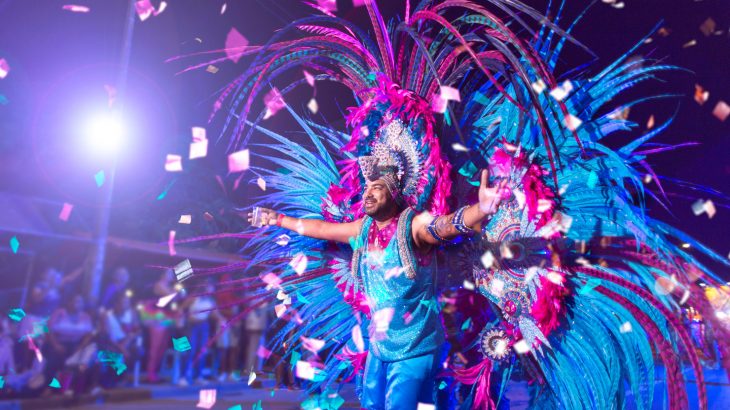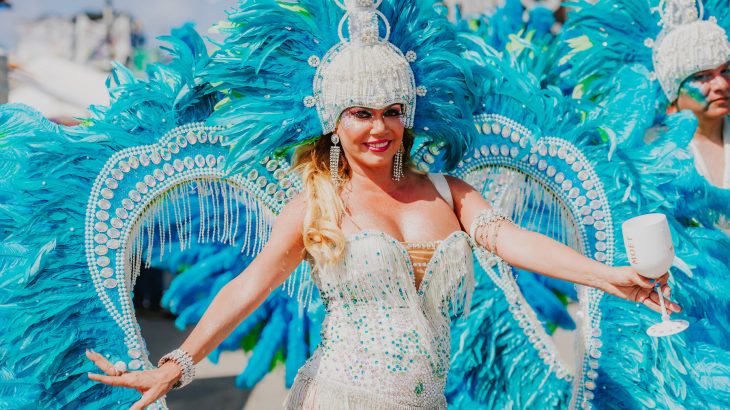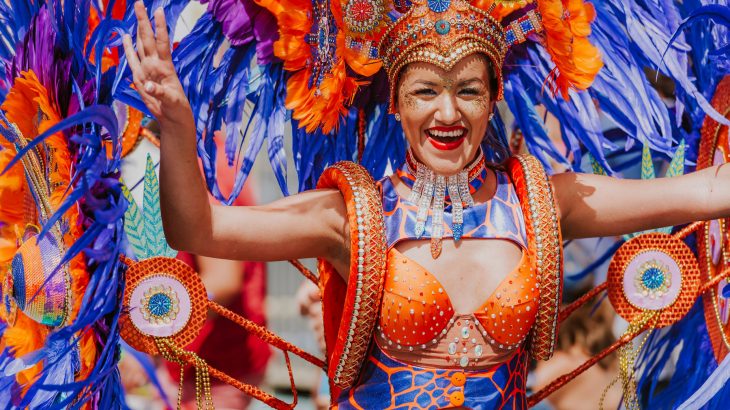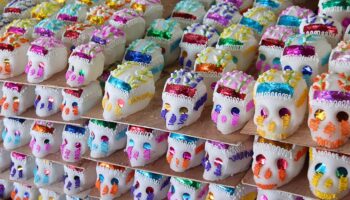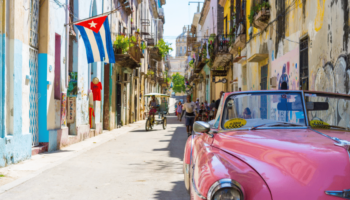This year Aruba is celebrating its 65th Carnival and once again, locals don glittery costumes and hit the streets. For two months, the islands’ main cities vibrate to the rhythm of steel bands, calypso tunes and road march music. Arubans know how to party and the proof is in their annual carnival. Here is all you need to know about these two months of celebrations that transform Aruba into a huge outdoor street party.
A Short History of Aruba Carnival
Aruba Carnival is a fascinating fusion of American, European and Caribbean traditions that immigrants brought along when they moved to the island. Already since the early 20th century, the island’s social clubs held private costume parties and European-style balls. In 1944, Aruba’s oldest social club called Tivoli Club held the first pre-Lenten celebration in Oranjestad, the island’s capital. These were the earliest-recorded masquerade parties to take place on the island and even though they looked nothing like the modern Aruba Carnival, they laid fertile grounds for what was to follow.
Caribbean-English immigrants from Trinidad and Jamaica that started coming to the island to work at Lago Oil Refinery brought their own traditions and customs with them—and celebrating in the streets was the most prominent among them. When the Allies won World War II, English immigrants organized a big parade in San Nicolas, Aruba’s “Sunrise City,” to celebrate the victory. That event fuelled a desire of organizing a wide public carnival and in 1954, Aruba Carnival took place for the first time.
It took 11 years for the locals to found the Carnival’s organizing body but on November 11, 1966 at 11:11 a.m., Stichting Arubaanse Carnaval came into life. Since then, Arubans celebrate the beginning of the carnival season at the exact same moment every year.
When Does Aruba Carnival Start & How Long Does it Last?
Even though the Carnival season officially starts in November, the major parades and events start taking place as late as January. The official carnival celebrations last for two months and finish just before Lent with the Grand Parade and the burning of King Momo marking the end of the year’s carnival season. Both events take place on the same day in Oranjestad.
Where Does Aruba Carnival Take Place?
The street parties and festivities of Aruba’s Carnival take place in all the island’s major cities. The capital Oranjestad hosts the largest events, including the first parade in January and the last one in March. San Nicolas, the island’s second-largest city, also brims with boisterous events throughout the carnival season. San Nicolas Grand Parade takes place one day before the final celebration and starts at Joe Laveist Sport Park at 10 am. Other cities, such as Noord in the northern part of the island or Santa Cruz in central Aruba, keep up the festive spirit with smaller yet equally fun events.
Carnival’s Contests & Election of Aruba Carnival Queen
About two weeks after carnival begins, locals gather for the election of the Aruba Carnival Queen. Contestants are between 17 and 25 years old and the one elected by the judges is responsible for leading the carnival parades as well as representing the Aruban carnival abroad. But since the Queen can’t appear in the events unaccompanied, the Aruban carnival tradition also dictates the election of the Prince and his personal follower Pancho. Teenagers and little ones have their own elections for Youth Queen and Children’s Queen election respectively, while women over 26 years old run for the Mrs. Carnival title.
Aruba Carnival Parades You Shouldn’t Miss
Fakkel Optocht/Parada di Flambeau or simply Torch Parade
Aruba’s Torch Parade, also known as Fakkel Optocht, signals the beginning of the carnival. The required costumes for this parade aren’t glamorous dresses with colorful feather collars. Carnival groups must only dress up with creatively decorated T-shirts—this might sound a bit disappointing but wait until you see how creative Arubans get with their costumes. As the name implies, during this event participants hold neon torches while they parade along the city’s streets. From 8 pm until 2 am, hundreds of fluorescent colors paint the island’s night sky, getting locals in a festive spirit for the 60 days ahead.
Aruba’s Grand Lighting Parade
For the few weeks following the torch parade, Arubans’ weekends are reserved for colorful festivities. Several smaller events and street parties warm locals up for Aruba’s Grand Lighting Parade, the carnival’s next most notable event. During the Grand Lighting Parade, participants are dressed in glimmering costumes adorned with tiny little lights and colorful feather headdresses. From 8 pm to 2 am, carnival groups take over the streets dancing in the rhythm of steel and brass bands. This year, the Grand Lighting Parade takes place on February 23 in Oranjestad and a week later in San Nicolas.
Aruba’s Grand Parade
Grand Parade, scheduled to take place on Sunday, March 3 this year, indicates the end of the carnival season. Naturally, the location could be no other than the capital’s city center. After the parade finishes at 7 pm, the crowd gathers at the Carnival Harbour Arena for the Burning of King Momo. On Saturday, March 2, San Nicolas holds its own Grand Parade which might not be as spectacular as the one in the capital, but it is still an event worth seeing.
Who is King Momo?
If you aren’t a Latin America native, chances are you’re wondering who Momo is and why Caribbeans chose to end their carnival season by burning his figure. Momus is an entity from Greek mythology, notorious for his mischievous behavior, mockery and criticism. King Momo or Rey Momo as he’s known in many Caribbean countries, is actually the spirit of carnival. He symbolizes fun, exaggeration and satire—in plain words, everything a carnival stands for. The burning of King Momo at the end of the two-months celebrations signifies the end of partying and carnival extravaganza and the transition to Lent’s fasting.
Aruba Carnival Parades & Events for Kids
Children have their own parades to look forward to during Aruba Carnival. Aside from the Children & Youth Queen Elections, little ones celebrate the carnival with the Children & Youth Calypso & Roadmarch Contest in San Nicolas and the Children’s Parade in Noord. During Aruba Carnival, the Children Grand Parades take place in Oranjestad and San Nicolas on Sunday, February 17 and Sunday, February 24, respectively.
What is the Jouvert Morning?
Jouvert morning, also known as “pajama party”, is Aruba Carnival’s only event that starts after midnight and lasts until dawn. Thus, deserving special mention in our Aruba Carnival guide. At 3 am on the night before Aruba’s Grand Lighting Parade, San Nicolas’ streets fill up with the island’s most popular musicians and an enthusiastic crowd dances the night away. A couple of hours after sunrise, partygoers head back home for a few hours of good sleep before hitting the streets again for the Grand Lighting Parade.
Where to Eat During Aruba Carnival
Aruba Carnival is synonymous to exaggeration, but not only when it comes to partying. Arubans know well that food and drink can’t be missing from a proper fest, so during the carnival, smells of local delicacies linger in the air all day and night. There are numerous food stands around the island selling pastechi, fried finger food and juicy sandwiches. If you prefer to have more than an empanada or a croquette for lunch, you’ll find numerous restaurants serving traditional Caribbean dishes. But with every place around the carnival packed, make sure to make a reservation beforehand.
